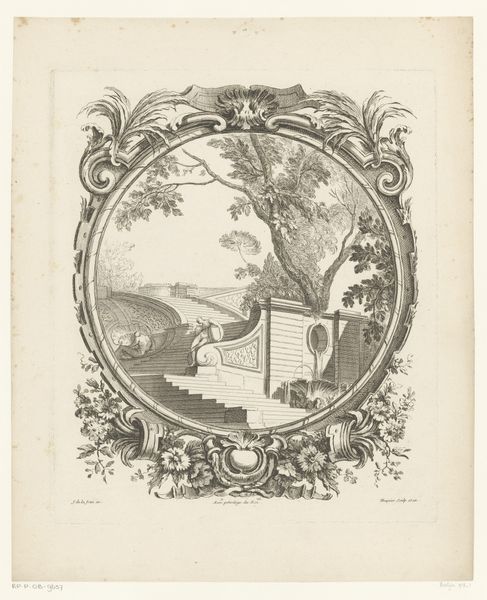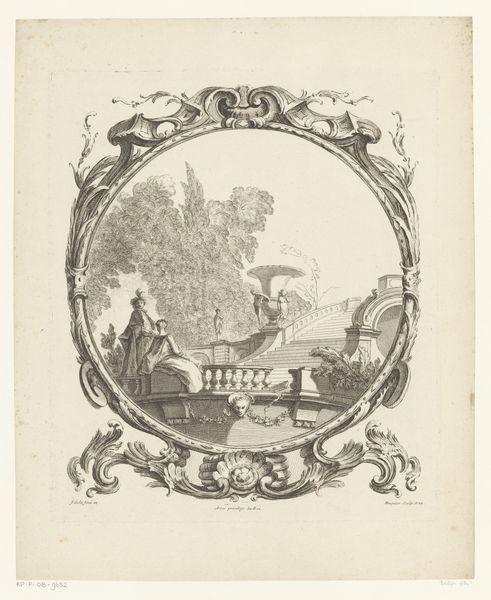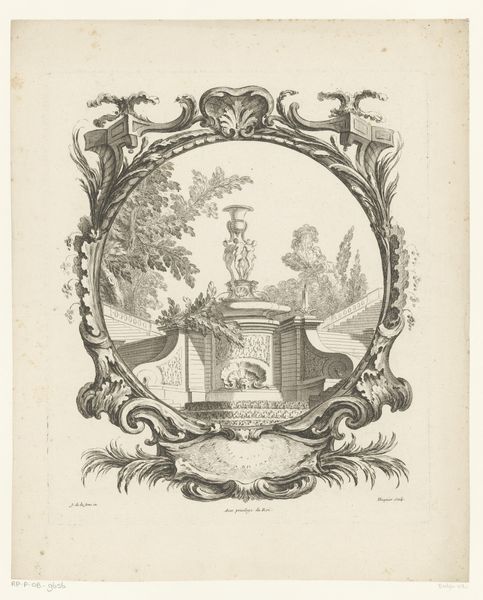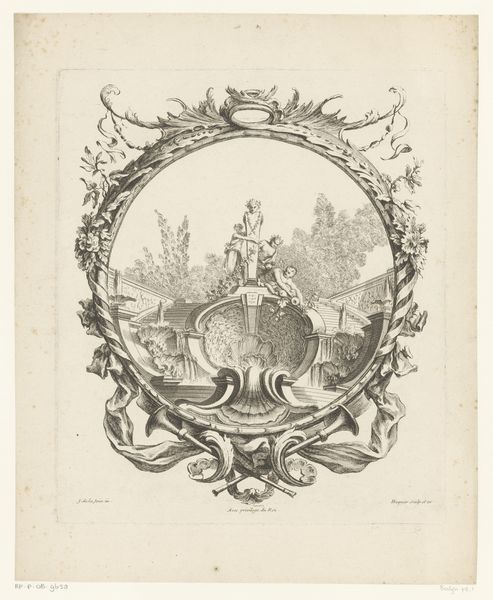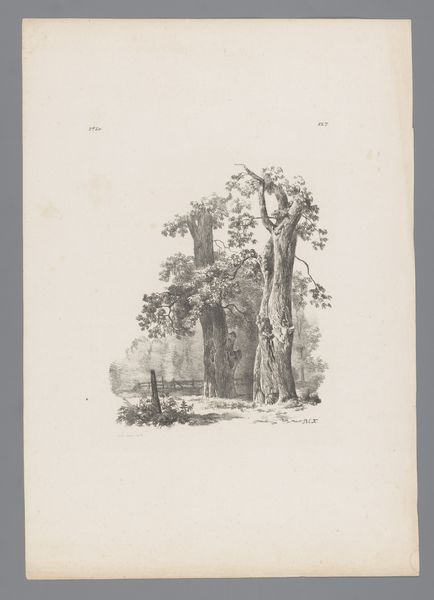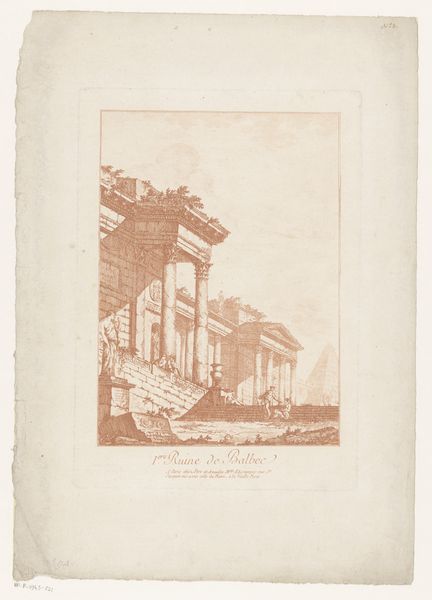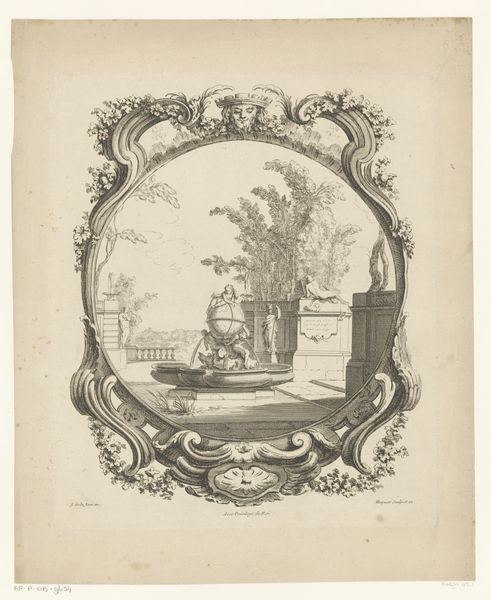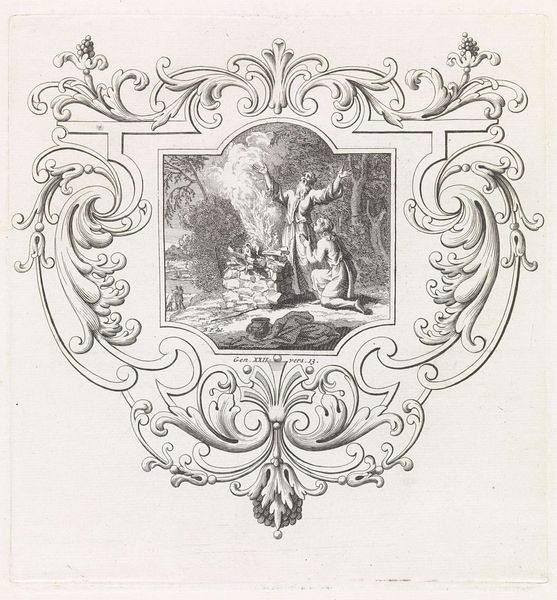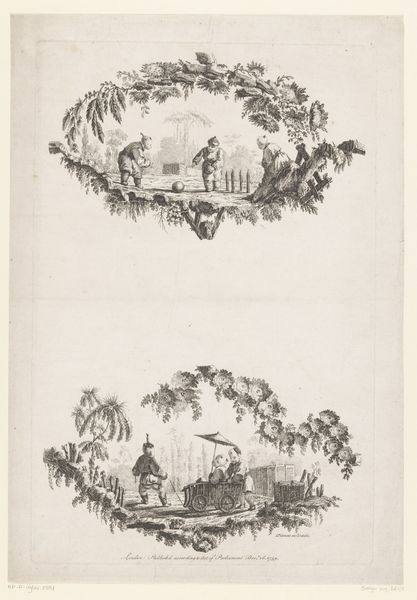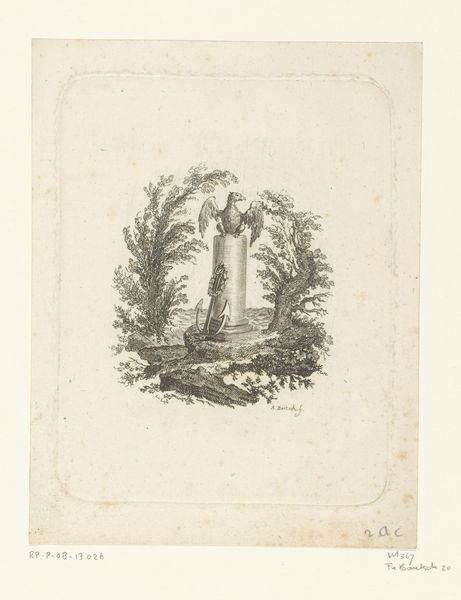
print, engraving, architecture
#
baroque
# print
#
landscape
#
line
#
engraving
#
architecture
Dimensions: height 321 mm, width 275 mm
Copyright: Rijks Museum: Open Domain
Curator: Here we have an engraving from between 1731 and 1761, titled "Tuin met fonteinen en zittende figuren"—"Garden with Fountains and Seated Figures"— attributed to Gabriel Huquier. Editor: My first impression is a kind of melancholic grandeur. It’s beautiful, of course, but the monochrome and the rather formal, almost symmetrical layout lend it a certain feeling of wistfulness. Curator: Absolutely. Baroque landscaping was frequently used to assert social dominance and control of nature. You see this push-and-pull reflected in the precise, constructed garden juxtaposed with the softer, uncontrolled lines of nature at the periphery. This tension also underscores hierarchical social structures, contrasting the elites relaxing near the fountains with the unseen labor required to maintain this manufactured landscape. Editor: Fountains often represent sources of life, rebirth, and purification across cultures, yet here the fountains seem more decorative, contributing to that sense of controlled opulence. Are there classical allusions embedded in the sculpture or the architectural details? Curator: Definitively. Notice the classical statues—symbols of wisdom, beauty, and power—positioned carefully to evoke a legacy and project ideals of the Enlightenment era, when the prints were made and collected. These garden follies and artificial structures create their own context, subtly declaring the patron's authority and aspirations to legacy. Editor: This interplay between the artificial and natural—it reminds me of other era anxieties: about legacy, fleeting time and about controlling chaotic social forces. And framing the composition inside that very decorative oval makes the actual landscape feel staged somehow, deliberately separate from real life, as though the world is to be performed on this perfect scenery. Curator: Precisely. Its performative nature also underscores how such spaces excluded anyone who did not fit that era’s definition of ‘refined society.’ This print therefore functions as both an aesthetic object and a social document that warrants a critical lens. Editor: Examining this engraving allows us to reflect on the values and the often-unacknowledged social divisions inherent in such idealized landscapes, an element worth keeping in mind when thinking of continuity and progress in time.
Comments
No comments
Be the first to comment and join the conversation on the ultimate creative platform.
